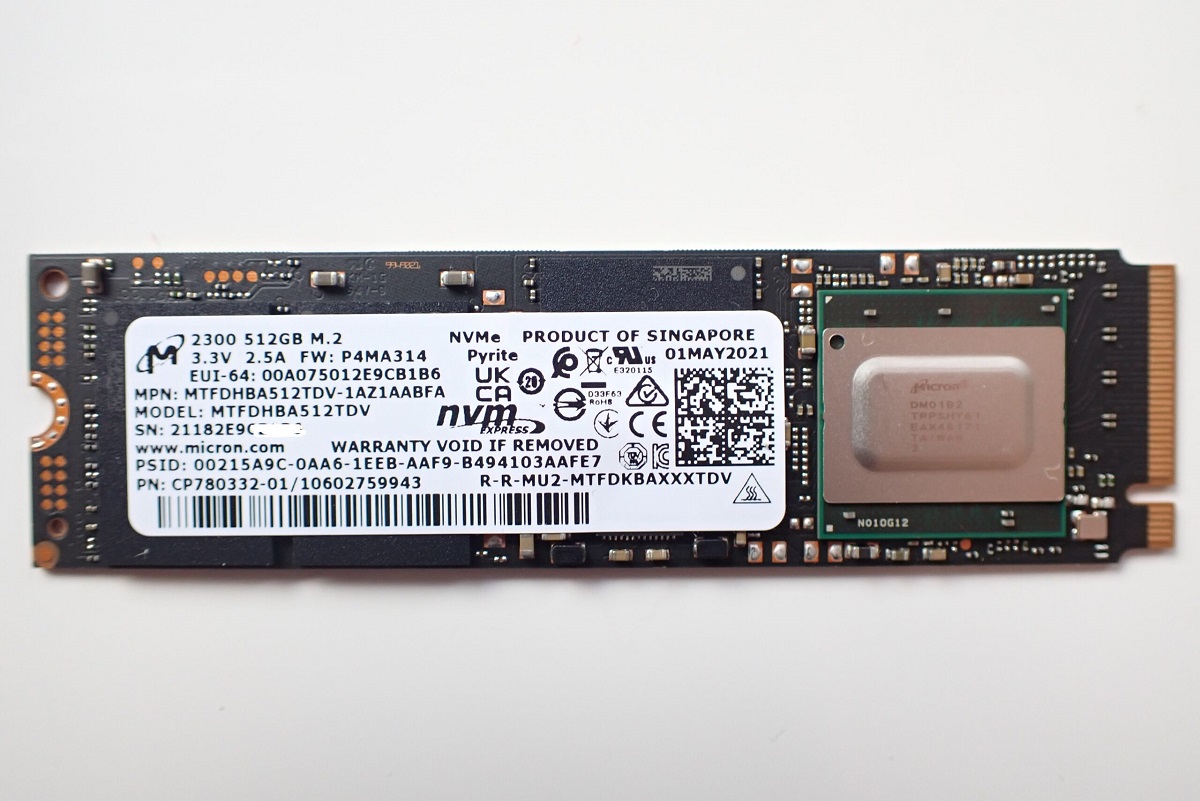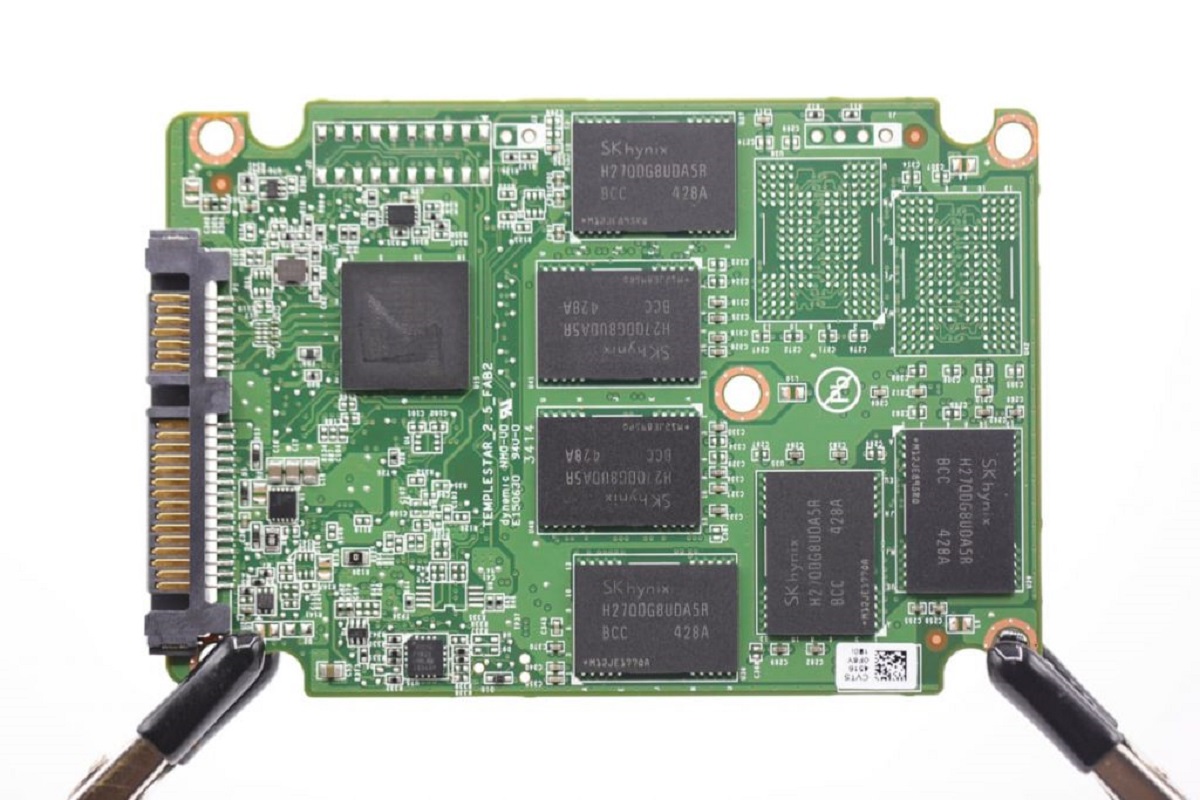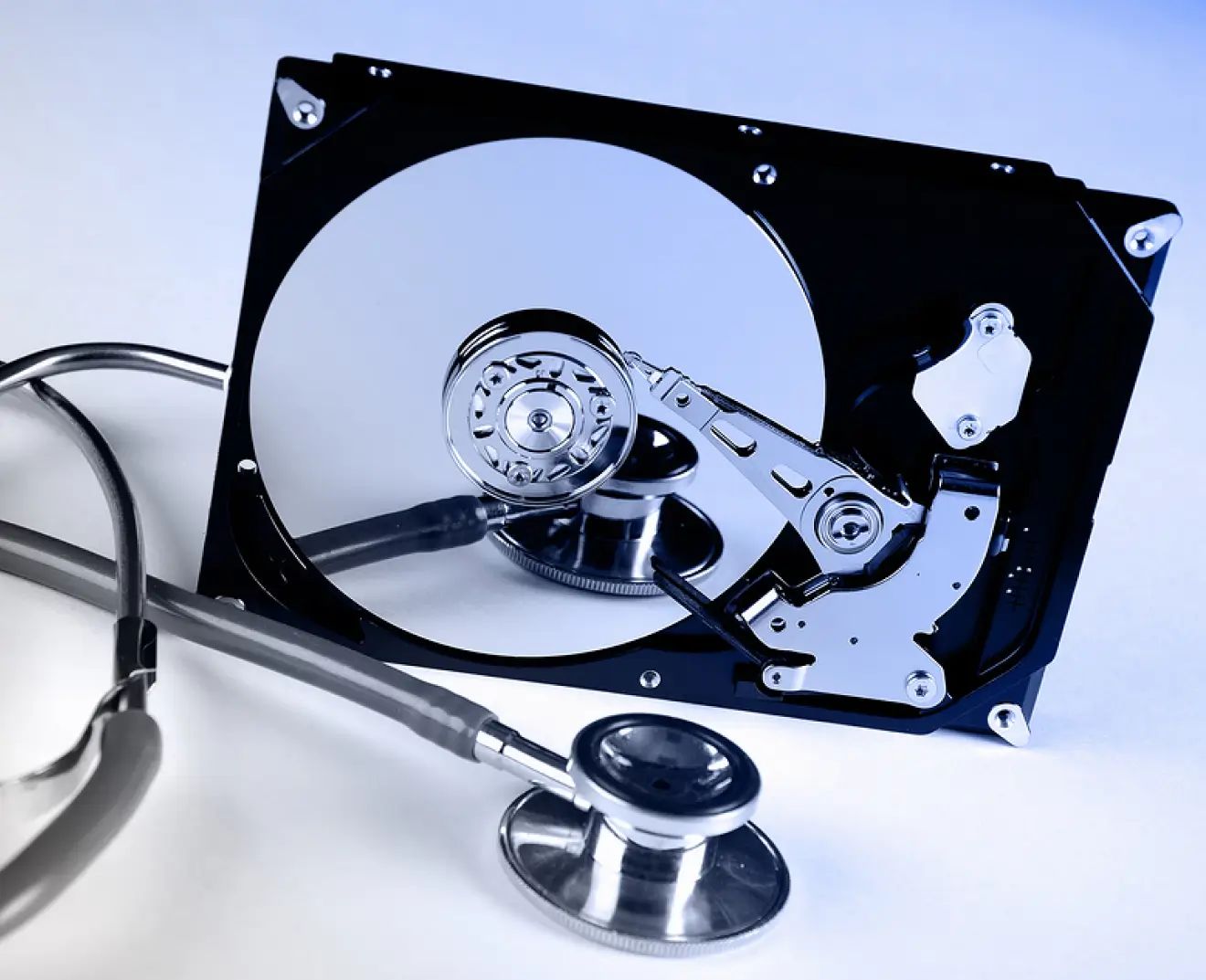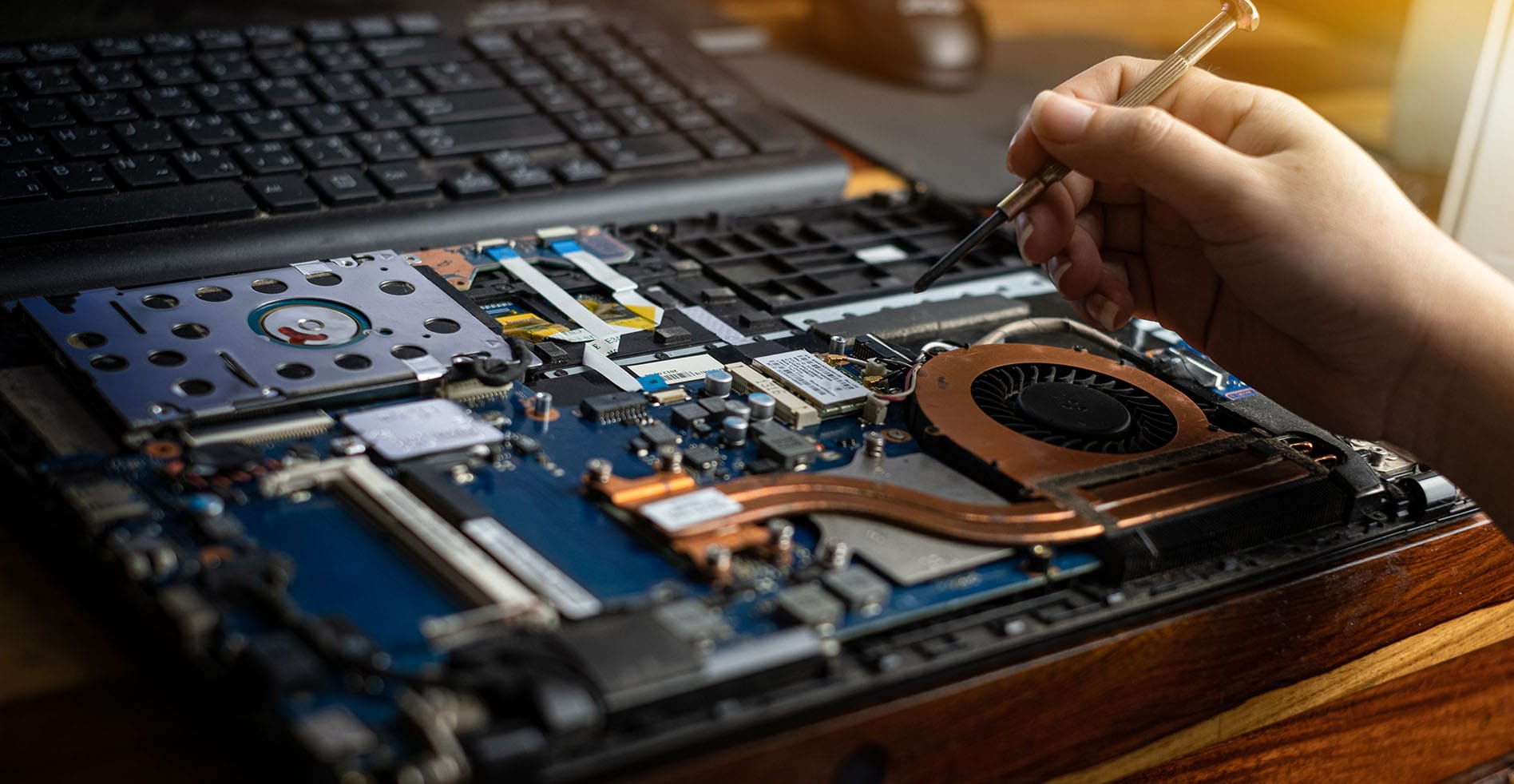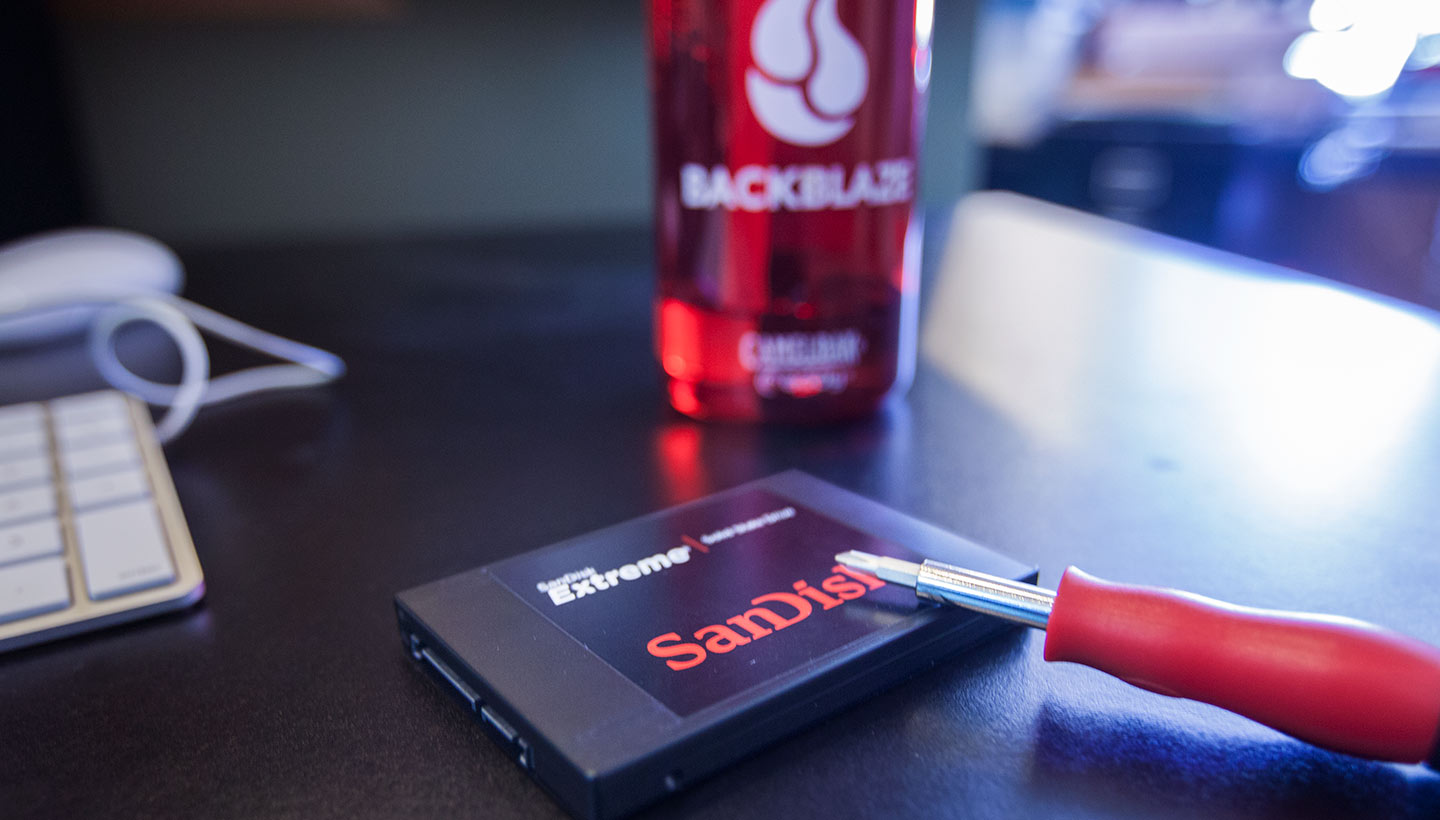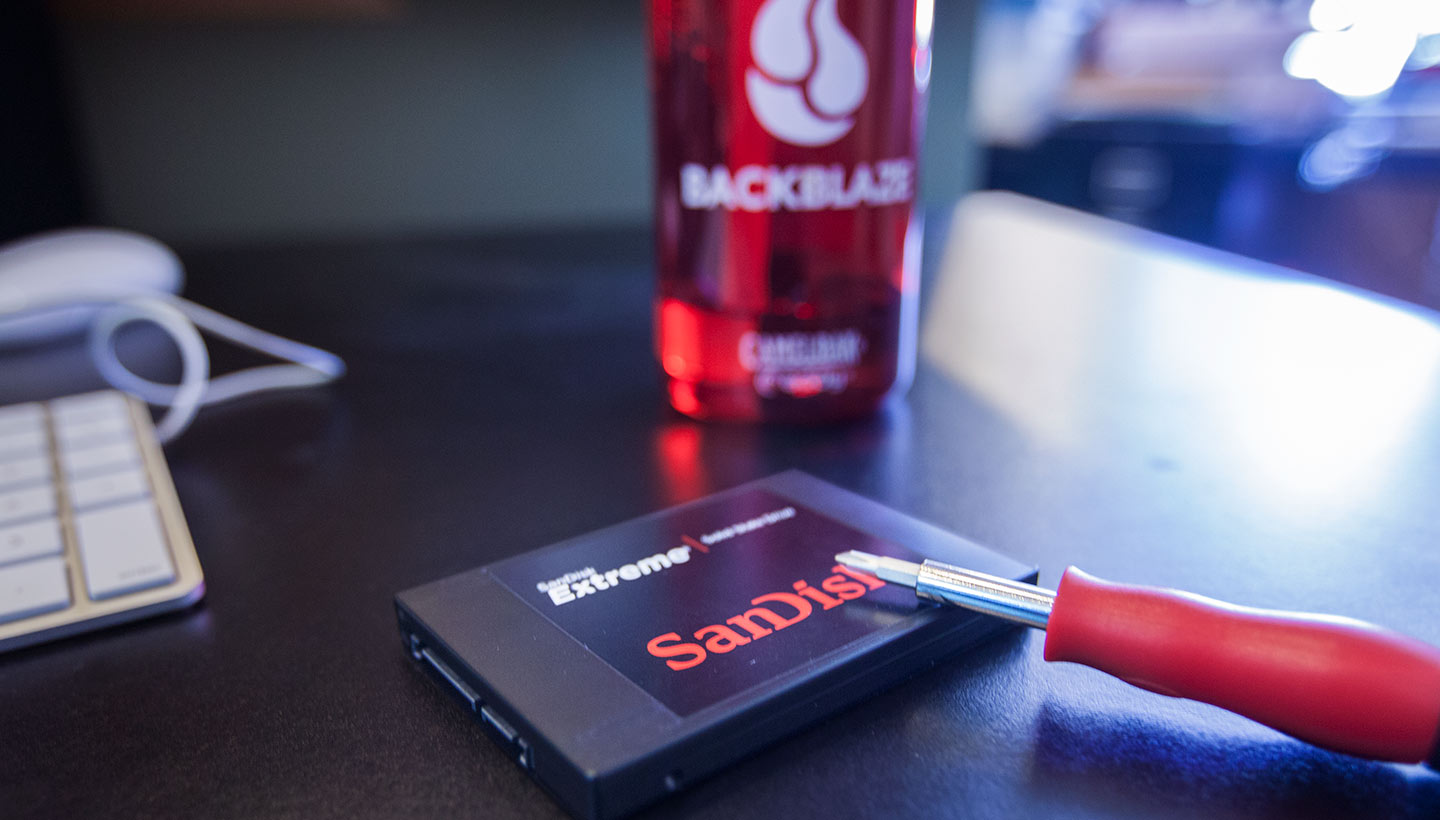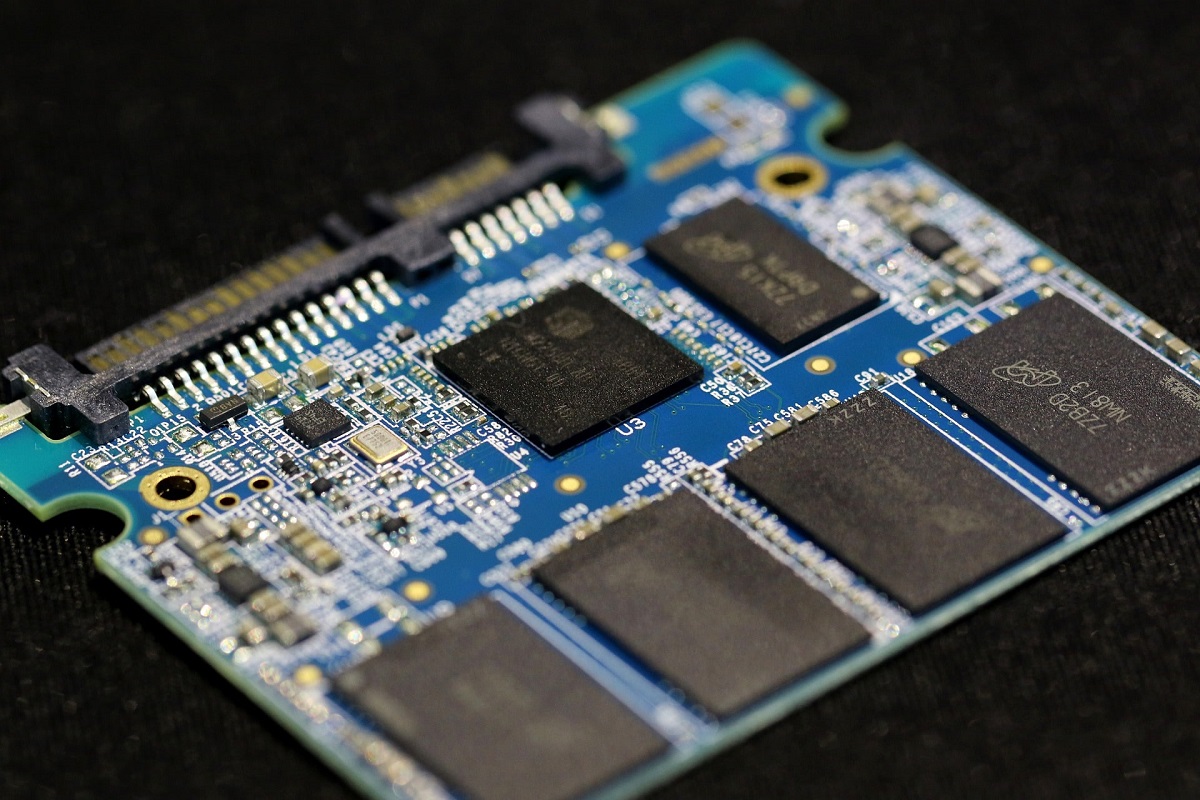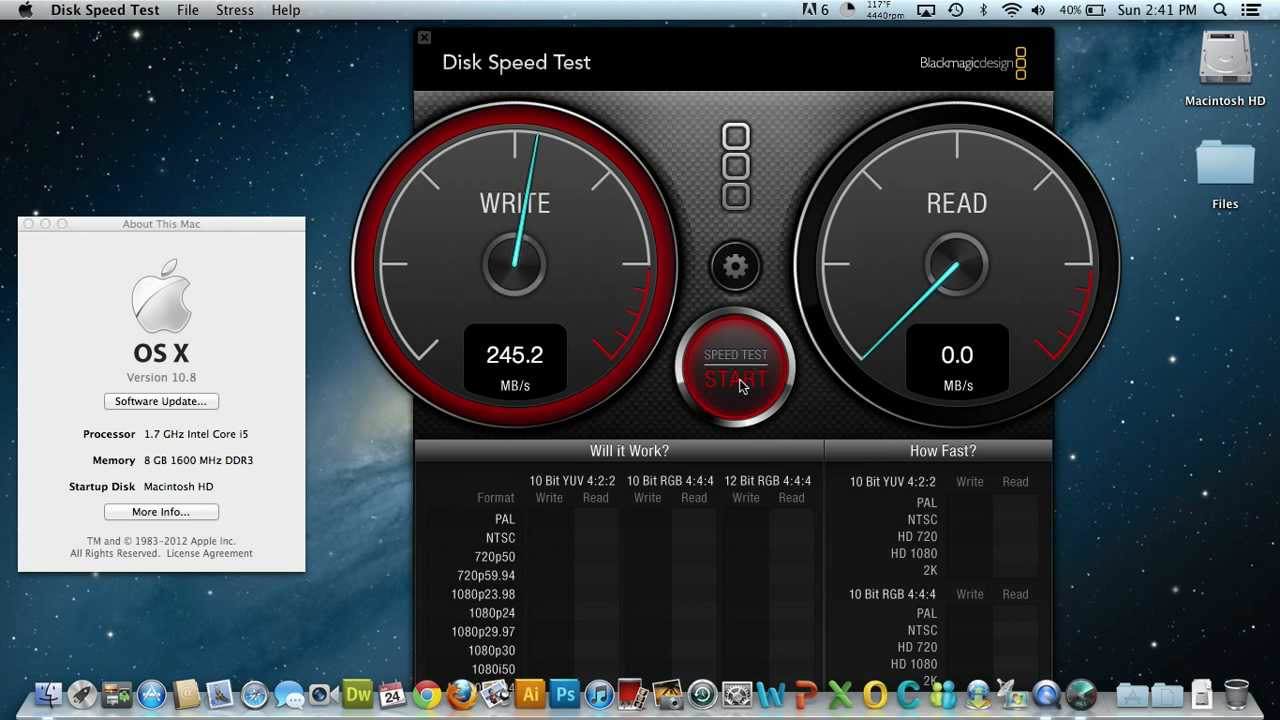Introduction
Welcome to our guide on how to fix bad sectors on an SSD. Solid-state drives, or SSDs, have become increasingly popular due to their faster performance, enhanced reliability, and lower power consumption compared to traditional hard disk drives (HDDs). However, like any storage device, SSDs are not entirely immune to issues. One such problem is the occurrence of bad sectors.
Bad sectors are areas on the SSD that are physically damaged or have become unreliable for storing data. When a bad sector is encountered, it may result in data corruption, system instability, and even potential data loss. Therefore, it’s crucial to address this issue promptly to maintain the optimal performance and longevity of your SSD.
In this guide, we will explore the causes of bad sectors on SSDs, methods for identifying them, and various approaches to fixing them. We will also discuss the importance of backing up your data before attempting any repairs and guide you through both built-in tools and third-party software solutions that can help resolve bad sector issues. Additionally, we will touch upon when it might be necessary to replace the SSD if bad sectors persist despite repair attempts.
Whether you’re a beginner or an experienced user, this guide will provide you with the necessary knowledge and techniques to tackle bad sectors on your SSD effectively. Let’s dive in and discover how to overcome this common issue and ensure the optimal functioning of your SSD and the safety of your data.
What are bad sectors on an SSD?
Before delving into the process of fixing bad sectors on an SSD, it’s important to understand what exactly they are. A bad sector refers to a section of the SSD’s storage space that has become damaged or unreliable for storing data.
In an SSD, data is stored in memory cells. Each memory cell can hold electrical charges, representing the binary states of 1s and 0s that make up our data. Over time, due to various factors, these memory cells can deteriorate, resulting in the formation of bad sectors.
There are primarily two types of bad sectors: logical bad sectors and physical bad sectors.
Logical bad sectors are caused by software or file system issues. They typically occur due to data corruption, improper shutdowns, or malware infections. In such cases, the SSD is still physically functioning correctly, but the data stored in certain areas has become inaccessible or unusable.
On the other hand, physical bad sectors occur when there is a physical defect in the SSD’s memory cells. The underlying NAND flash memory can wear out over time, leading to the formation of these defective areas. Physical bad sectors can affect the overall performance of the SSD and increase the risk of data loss.
When a bad sector is encountered, the SSD’s controller attempts to reallocate the data to a spare area known as the spare sector. This process is known as wear-leveling and helps to ensure that the damaged area is no longer used for data storage. However, if the number of bad sectors exceeds the available spare sectors, it can lead to data loss or system instability.
To effectively address bad sectors on an SSD, it’s crucial to identify them accurately and take appropriate corrective measures. In the next section, we will explore the common causes of bad sectors on an SSD and how to detect them.
What causes bad sectors on an SSD?
Understanding the causes of bad sectors on an SSD can help in preventing their occurrence and taking necessary precautions. While SSDs are designed to be more reliable than traditional hard drives, several factors can contribute to the formation of bad sectors. Let’s explore some common causes:
- Natural wear and tear: Over time, the NAND flash memory cells in an SSD can degrade due to repeated program/erase cycles. This wear and tear can lead to the development of bad sectors, especially in older SSDs or those that have been heavily used.
- Power fluctuations: Sudden power outages or voltage fluctuations can interrupt the writing process, resulting in data corruption and potentially causing bad sectors to form on the SSD.
- Manufacturing defects: While rare, SSDs can sometimes have manufacturing defects that lead to the formation of bad sectors right from the beginning. These defects can range from faulty memory cells to problems with the controller or other components.
- Physical damage: Dropping or mishandling an SSD can cause physical damage to the memory cells, resulting in the formation of bad sectors. It’s important to handle SSDs with care to minimize the risk of physical damage.
- Excessive heat: SSDs are sensitive to high temperatures, and prolonged exposure to heat can accelerate the degradation of memory cells. This can contribute to the development of bad sectors over time.
It’s worth noting that while the above factors can increase the likelihood of bad sectors, not all SSDs are guaranteed to develop them. Modern SSDs are designed with advanced error correction mechanisms and wear-leveling algorithms to minimize the occurrence of bad sectors. However, it’s always prudent to be aware of the potential causes and take appropriate precautions to ensure the longevity and performance of your SSD.
Now that we understand the causes of bad sectors, let’s move on to the next section and learn how to identify them on an SSD.
Identifying bad sectors on an SSD
Identifying bad sectors on an SSD is essential to determine the extent of the issue and take appropriate corrective measures. Fortunately, there are several methods and tools available to help you with this process. Let’s explore the different ways to identify bad sectors on an SSD:
- S.M.A.R.T. monitoring: Most modern SSDs support Self-Monitoring, Analysis, and Reporting Technology (S.M.A.R.T.), which provides vital information about the health and performance of the drive. You can use S.M.A.R.T. monitoring tools to check for any potential issues, including the presence of bad sectors.
- Operating system utilities: Operating systems like Windows and macOS have built-in disk scanning and diagnostic tools that can help identify bad sectors. For instance, Windows users can utilize the “Error-checking” tool or the Command Prompt’s “chkdsk” command to scan and fix issues on their SSDs.
- Third-party diagnostic software: There are various third-party software applications available that specialize in diagnosing and repairing SSDs. These tools often provide detailed reports on the health of your SSD, including the presence of bad sectors.
- Unexplained system errors and data corruption: If you notice frequent system errors, crashes, or data corruption issues, it could be a sign of bad sectors on your SSD. These issues can occur when the SSD is struggling to read or write data to the affected sectors.
- Analysis of S.M.A.R.T. attributes: Some third-party software can analyze the S.M.A.R.T. attributes of your SSD and provide insights into the presence of bad sectors. Look for attributes like “Reallocated Sectors Count” or “Uncorrectable Sector Count” that indicate potential issues with your SSD.
Remember to perform regular checks and monitoring of your SSD to catch any bad sector issues early on. Identifying bad sectors promptly can help prevent further data loss or system instability.
Now that we know how to identify bad sectors, let’s move on to the next section and discuss the importance of backing up your data before attempting to fix them.
Backing up data before fixing bad sectors
Before attempting to fix bad sectors on your SSD, it is crucial to prioritize the safety of your data by backing it up. Fixing bad sectors involves manipulating the SSD’s firmware and the risk of potential data loss or further damage always exists. It is therefore best practice to create a backup of your important files and documents beforehand.
Here are a few reasons why backing up your data is essential before fixing bad sectors:
- Data protection: Backing up your data ensures that your important files and documents are protected in the event that any issues arise during the repair process. It acts as a safety net to prevent permanent data loss.
- Preventing further damage: Attempting to fix bad sectors involves accessing and manipulating the firmware of the SSD. In rare cases, this process could potentially cause further damage to the drive. Having a backup ensures that even if unexpected complications arise, your data remains intact.
- Efficient recovery: In case the repair process fails or the bad sectors cannot be fixed, having a backup allows for an efficient and quick recovery. You can simply restore your files to a new SSD or another storage device without losing any data.
- Peace of mind: Knowing that your data is securely backed up provides peace of mind during the repair process. You can proceed with confidence, knowing that even if the worst-case scenario occurs, your valuable files are safe and recoverable.
There are several methods to back up your data, including using external hard drives, cloud storage services, or dedicated backup software. Choose a method that suits your needs and ensure that your backup is up to date before proceeding with any repairs on your SSD.
Now that we understand the importance of data backup, let’s explore the methods to fix bad sectors on an SSD and restore its optimal performance.
Fixing bad sectors on an SSD
When it comes to fixing bad sectors on an SSD, there are a few different approaches you can take. It’s important to note that not all bad sectors can be fixed, especially if they are physically damaged. However, in many cases, there are methods you can try to resolve the issue and restore the optimal performance of your SSD. Let’s explore some of these methods:
- Using built-in tools: Some SSD manufacturers provide software utilities that can help diagnose and repair bad sectors. These tools may include features like firmware updates, secure erase, or automatic repair functions. Check the manufacturer’s website for any available software specifically designed for your SSD model.
- Using operating system utilities: Both Windows and macOS offer built-in tools that can be used to repair bad sectors on an SSD. For Windows users, the “Error-checking” tool or the Command Prompt’s “chkdsk” command can be utilized. macOS users can use the “Disk Utility” application to scan and repair SSD drives. Follow the instructions provided by the respective operating system to run these utilities effectively.
- Using third-party software: There are various third-party software solutions available that specialize in repairing bad sectors on SSDs. These applications often offer advanced features and more control over the repair process. Research and choose a reputable software that is compatible with your SSD and follow the provided instructions to fix the bad sectors.
- Secure erase and reinstall: In some cases, a secure erase of the SSD and reinstalling the operating system can help fix bad sectors. This process involves completely wiping the drive and starting fresh. Remember to back up your data before performing a secure erase, as it will erase all data on the SSD.
- Professional assistance: If all else fails, or if you are unsure about performing the repairs yourself, consider seeking professional assistance. SSD repair services or contacting the manufacturer’s support team can provide valuable guidance and assistance in resolving the bad sector issue.
Remember that the effectiveness of these methods can vary depending on the severity and nature of the bad sectors on your SSD. It’s important to regularly monitor the health of your SSD, perform backups, and address any issues promptly to minimize the risk of data loss or further damage.
Next, let’s discuss what steps you can take if the bad sectors persist despite your repair attempts.
Using built-in tools to fix bad sectors
If you’re encountering bad sectors on your SSD, one of the first steps to take is to utilize the built-in tools provided by the SSD manufacturer or the operating system. These tools are designed to diagnose and repair common issues, including bad sectors. Here are some common built-in tools you can use:
- SSD manufacturer’s software: Many SSD manufacturers offer specific software utilities to diagnose and repair SSD issues. These tools are designed to work seamlessly with their SSD models and provide features like firmware updates, secure erase, and automatic repair functions. Check the manufacturer’s website for any available software for your SSD and follow the provided instructions to fix the bad sectors.
- Windows Error-checking tool (Windows OS): Windows has a built-in Error-checking tool that can help scan and repair bad sectors. To use this feature, go to “This PC” or “My Computer,” right-click on the SSD drive you want to check, select “Properties,” and navigate to the “Tools” tab. Under the “Error checking” section, click on the “Check” button to start the scan and follow the on-screen instructions to fix any detected issues.
- Command Prompt (Windows OS): Windows users can also fix bad sectors on their SSD using the Command Prompt. Open the Command Prompt as an administrator and enter the “chkdsk” command followed by the drive letter of your SSD and the “/f” parameter, e.g., “chkdsk C: /f”. This command will scan and attempt to repair any bad sectors on the specified drive.
- Disk Utility (macOS): macOS users can utilize the built-in Disk Utility application to fix bad sectors on their SSDs. Open Disk Utility, select the SSD drive you want to fix, and click on the “First Aid” button. Follow the on-screen instructions to scan and repair any detected issues.
It’s important to note that the effectiveness of these built-in tools can vary depending on the severity of the bad sectors. In some cases, the tools may be able to repair the bad sectors, while in other cases, they may only mark the bad sectors as unusable, preventing further data loss. If the built-in tools are unable to fix the bad sectors or if the drive continues to exhibit issues, it may be necessary to explore other solutions or seek professional assistance.
With the use of built-in repair tools, you can attempt to rectify bad sector issues on your SSD without relying on third-party software or services. However, always remember to backup your important data before running any repair procedures to avoid potential data loss.
Next, we will explore the option of using third-party software to fix bad sectors on an SSD.
Using third-party software to fix bad sectors
If the built-in tools provided by the SSD manufacturer or the operating system are unable to resolve the bad sector issues on your SSD, you may consider using third-party software. These specialized applications are designed to diagnose and repair various SSD problems, including bad sectors. Here are some key points to consider when using third-party software:
- Research and choose reputable software: Take the time to research and choose a reliable third-party software that is specifically designed for fixing bad sectors on SSDs. Look for software that has positive user reviews and a track record of successfully resolving bad sector issues.
- Compatibility: Ensure that the third-party software is compatible with your SSD and the operating system you are using. Check the software’s official documentation or contact the vendor’s support team for confirmation if needed.
- Follow instructions carefully: When using third-party software, carefully follow the provided instructions to avoid any unintended consequences. Pay attention to any warnings or recommendations provided by the software during the repair process.
- Backup data: Before using third-party software, it is crucial to back up your important data. While the software’s aim is to repair bad sectors, there is always a small risk of data loss or further damage to the SSD. Having a backup ensures that your data is protected.
- Scan and repair: Once you have chosen and installed the appropriate third-party software, run a scan on your SSD to detect any bad sectors. Depending on the software, it may provide options to repair the detected bad sectors. Follow the software’s instructions to attempt the repair.
- Consider professional assistance: If you are unsure about using third-party software or if the software fails to fix the bad sectors, consider seeking professional assistance. SSD repair services or reaching out to the software vendor’s support team can provide expert guidance to resolve the issue.
Third-party software can often provide advanced features and more control over the repair process, making them a viable option if other methods have proven unsuccessful. However, it’s important to choose reputable software and carefully follow the instructions to ensure the best possible outcome.
Next, we will discuss the option of replacing the SSD if the bad sectors persist despite repair attempts.
Replacing the SSD if bad sectors persist
In some cases, despite using built-in tools or third-party software to fix bad sectors on an SSD, the issues may persist. If you have exhausted all possible repair options and the bad sectors continue to cause problems, it may be necessary to consider replacing the SSD. Here are some reasons why replacing the SSD could be the best course of action:
- Unreliable performance: Bad sectors can lead to data corruption, system crashes, and other performance issues. If you find that your SSD is still exhibiting these problems even after attempted repairs, it may indicate that the bad sectors are beyond repair.
- Worsening condition: In some cases, bad sectors on an SSD can spread or increase in number over time. If you notice that the number of bad sectors is persistently growing or if new bad sectors appear despite repair attempts, it may be an indication of an underlying issue with the storage medium.
- Warranty considerations: If your SSD is still under warranty and the bad sector problem persists, it may be worth exploring warranty options with the manufacturer. They may replace the SSD free of charge if it meets the criteria outlined in the warranty agreement.
- Upgrade opportunity: If your SSD is outdated or no longer meets your storage needs, encountering bad sectors can be an opportunity to consider upgrading to a newer and more reliable model. SSD technology constantly evolves, offering advancements in performance, durability, and capacity.
- Data safety: If your data is of utmost importance and the bad sectors are causing significant risks to your files, replacing the SSD can provide peace of mind knowing that your data is stored on a reliable and secure storage device.
When replacing the SSD, ensure that you properly dispose of the old drive following recommended guidelines for electronic waste management and carry out the necessary steps to migrate your data to the new SSD.
Remember, if you decide to replace your SSD, it’s crucial to regularly back up your important data to prevent any future data losses or compatibility issues. Monitoring the health of your new SSD and implementing preventive measures can help prolong its lifespan and maintain optimal performance.
Now that we have explored the option of replacing the SSD, let’s conclude our guide on fixing bad sectors on an SSD.
Conclusion
Dealing with bad sectors on an SSD can be concerning, but with the right knowledge and tools, you can address the issue effectively. In this guide, we discussed what bad sectors are, the common causes behind their formation, and how to identify them on an SSD. We also emphasized the importance of backing up your data before attempting any repairs.
We explored various methods to fix bad sectors, including using built-in tools provided by the SSD manufacturer or the operating system, as well as third-party software. These methods can be effective in many cases, but it’s essential to understand the limitations and assess the severity of the bad sectors before proceeding.
If all repair attempts fail or the bad sectors persist, replacing the SSD may be the best course of action to ensure optimal performance and data safety. Upgrading to a newer model provides an opportunity to take advantage of improved technology and capacity.
Remember, prevention is key to maintaining the health of your SSD. Regularly monitoring the SSD’s health, running diagnostics, and performing backups are essential practices to minimize the risk of bad sectors and potential data loss.
We hope this guide has provided you with valuable insights and practical steps to address bad sectors on your SSD. By taking proactive measures and staying informed, you can ensure the longevity and reliability of your SSD, safeguard your data, and enjoy optimal performance for years to come.







